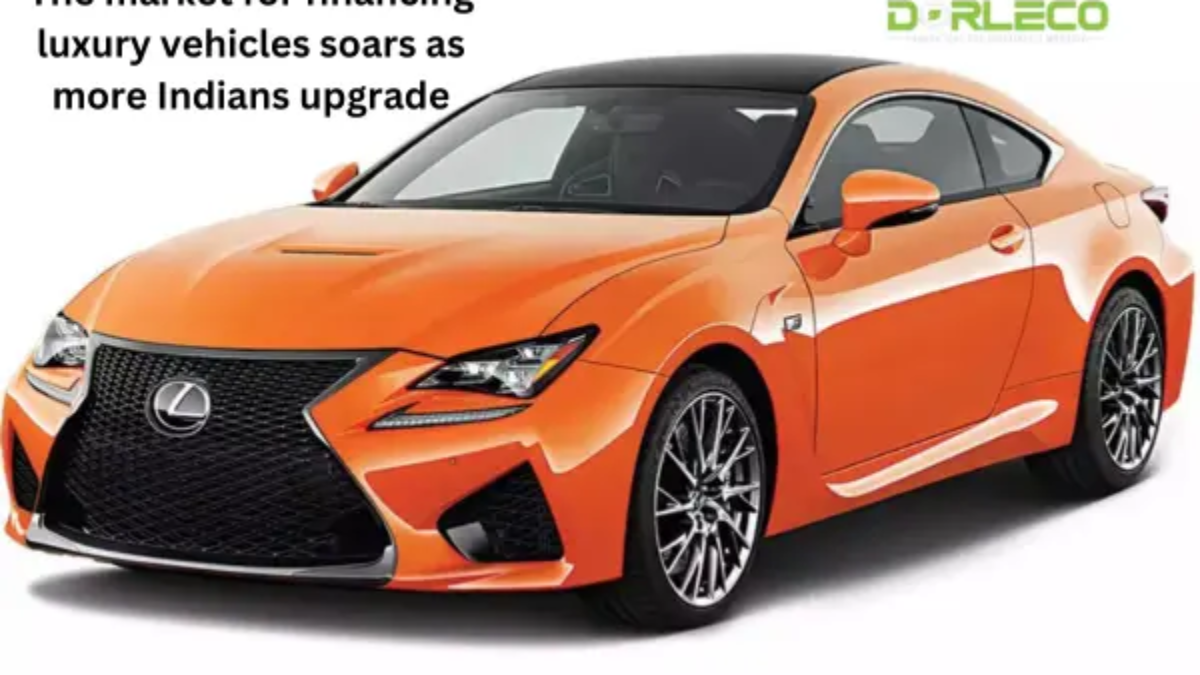The market for financing luxury vehicles in India and the variables influencing it are discussed by executives such as Madan Sabnavis from Bank of Baroda, Santosh Iyer from Mercedes-Benz, Shahrukh Todiwala from Kotak Mahindra Prime, and Ravi Bhatia from Jato Dynamics.
The need for loans to fund the purchase of luxury vehicles is rising quickly in India along with the sales of these vehicles.
As more people utilize loans to purchase high-end cars, banks like HDFC Bank, ICICI Bank, Bank of Baroda, Axis Bank, and Kotak Mahindra Bank, together with non-bank lenders and captive financiers of automakers like Mercedes-Benz and BMW, are witnessing a dramatic increase in financing luxury vehicles.
At the end of December, the outstanding balance on bank loans given to individuals for purchasing personal automobiles was ₹5.8 lakh crore. Executives in the banking and automotive sectors stated that financing luxury vehicles was a rapidly expanding portion of lenders’ auto loan portfolios, despite the lack of separate data on the subject.
With the advent of COVID, Indian consumers have shifted, becoming more affluent and upper middle class and willing to spend more on luxuries.
Demand is also being driven by young Indians’ rising income levels and the availability of the newest models from the portfolios of international luxury automobile manufacturers. According to business executives, many of these consumers use loans to fulfill their desire to buy luxury cars.
Up to 60–73% of the price of a car purchased in India from Lexus, BMW, Mercedes-Benz, Jaguar Land Rover, Audi, and Volvo is paid for with loans; the typical loan amount ranges from ₹40 lakh to ₹73 lakh. The range for BMW and Mercedes automobiles is ₹53-55 lakh, while the average for JLR vehicles is ₹73 lakh, as per the estimates provided by Jato Dynamics estimates, an automotive industry intelligence agency. These vehicles cost ₹45 lakh to ₹2.5 crore.
“The premium car market in India is witnessing a surge driven by changing lifestyle preferences as the younger population becomes more affluent and aspirational,” says Ravi Bhatia, president of Jato Dynamics.
These clients are also eligible for loans from lenders.
“The luxury car market has experienced unprecedented growth this year, with sales rising above the industry average due to better supply and improved demand,” stated Shahrukh Todiwala, a full-time director at Kotak Mahindra Prime, the bank’s vehicle finance division. Growth has been further aided by the trend of younger professionals who have greater disposable money and purchasing power and who favor luxury vehicles. Additionally, tier-2 centers are showing an increase in demand for luxury vehicles.”
Because financing luxury vehicles is more affordable than entry-level and mid-size car financing, bankers claim that financing luxury vehicles has lower delinquency rates.
Luxury automobiles are a status symbol, and those in higher income brackets are more inclined to take out bank loans. The Veblen effect—which states that demand rises as prices rise—has gained traction. These individuals are well-off and earn a lot of money, according to Bank of Baroda chief economist Madan Sabnavis. “Banks look at such customers more as those who can afford high-cost houses; therefore, the risk is low.”
Additionally, the loan books of captive financing luxury vehicle companies are expanding. Acerbically. MB Financial Services, a subsidiary of Mercedes-Benz, provides finance. India now accounts for 40% of the company’s car sales and has seen a 50% Greater average loan size than it did five years ago, according to Santosh Iyer, chief executive and managing director of the Indian division Of the car manufacturer. After completing the purchase, most customers go to higher segments. Loan term, but adhere to the brand, Iyer advised.

